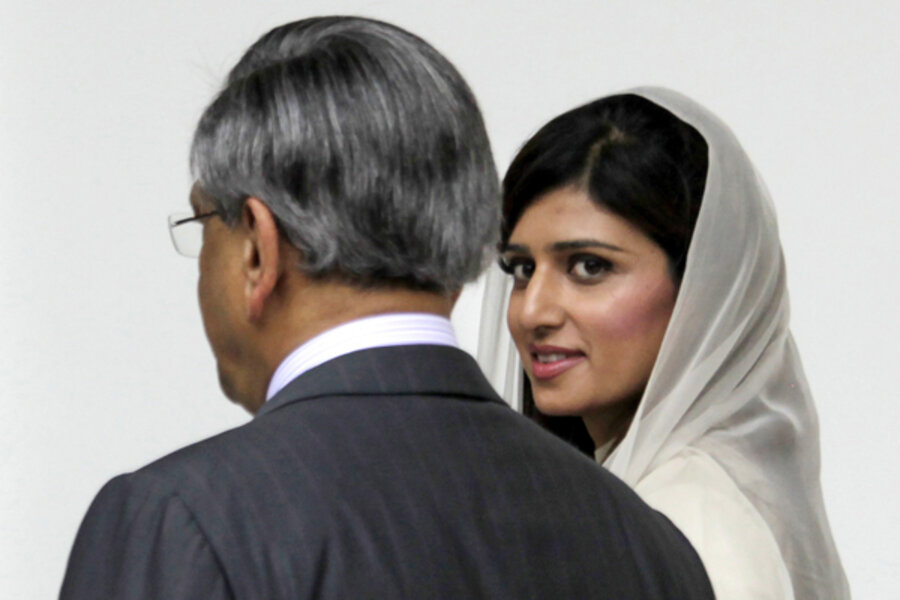Pakistan's foreign minister: The face of a new generation of peace with India?
Loading...
| New Delhi
A fresh face is bringing new optimism to one of the oldest international spats. On her first visit to New Delhi, Pakistan’s new 34-year-old foreign minister said she is hopeful that a younger generation of Indians and Pakistanis can find peace.
“A new generation of Indians and Pakistanis will see a relationship that will hopefully be much different from the one that has been experienced in the last two decades,” said Hina Rabbani Khar, Pakistan’s youngest-ever foreign minister.
One indication of that happening: Social-media interactions between the two countries are burgeoning. Facebook reports that their site is now logging more than 200,000 interactions between Indians and Pakistanis each day. That’s up from 70,000 a day in April.
Peace in South Asia is going to take more than a photogenic foreign minister and Facebook friendships. But it’s difficult to imagine popular support for any peace deal without first building some connection between the residents of both countries.
“People-to-people ties and a decisive boost in cultural exchanges is perhaps the only way that India and Pakistan can bury the hatchet and move ahead to resolve more pressing problems in their respective economies like poverty and unemployment,” reads a May 2010 analysis from Team C-Voter, a polling outfit in Noida.
The polling group found at the time that 74 percent of Indians agreed with the statement that “whatever be the situation at the government or administrative level, the common people [of the two countries] are united.”
What does that mean?
The two governments appear to recognize this, announcing today a new deal to slightly expand the very limited trade and travel across South Asia’s iron curtain. A list of 21 permissible products will now be allowed to be traded across the Line of Control that divides Pakistani-controlled Kashmir from the Indian-controlled side four days a week instead of two. The two bus links will now become more frequent as well.
But even with these “confidence building measures,” contact between Indians and Pakistanis will remain restricted. Visas are very hard to obtain, and even making phone calls across the border – which sometimes are tapped – can trigger cautionary SMS messages from cellphone providers in India.
The enforced isolation of people who share a common ancestry and cultural heritage has built up tremendous curiosity over the years. Journalists who make frequent trips to both countries are constantly asked about the commonalities and differences.
The role of social networking
Social networking is helping the curious in both India and Pakistan reach out for the first time. Social networking guru Sree Sreenivasan mentioned the surprising jump in Facebook interactions during a talk in New Delhi today. The data come from the website peace.facebook.com, which also charts increased networking between peoples in other conflict zones. An “interaction” can be people posting on someone’s wall, "liking" a profile, or sending a direct message, explained Mr. Sreenivasan.
“For the first time, you can have this kind of conversation,” said Sreenivasan. He hastened to add, though, that these interactions were no panacea – and not even necessarily all positive. “I don’t think they are all saying ‘I love you.’ ”
Presumably most of the social networking is taking place among the young. Pakistan’s Ms. Khar represents a youth boom that’s set to transform both nations. A full 64 percent of Indians and 73 percent of Pakistanis are under 35.
Khar lit up Twitter on both sides of the border, with many commenting on her youth and looks. But she also inspired some hope in the talks, which many have grown cynical about given how few deals have emerged over the years.
“Believe that Hina Rabanni Khar can iron out differences and hammer out a way forward. Beautiful lady has a thinking mind,” writes IbneBattuta.





